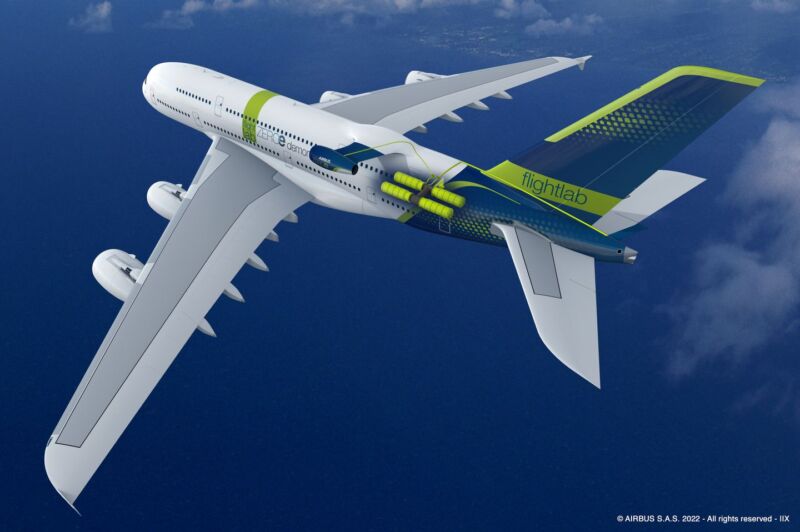
A complete hydrogen fuel cell powertrain assembly occupied the pride of place in the pavilion of Beyond Aero at the recently concluded Paris Air Show. That a fuel cell system was the Toulouse-based startup’s centerpiece at the biennial aero event is an indication of the steps being taken by a range of companies, from startups to multinational corporations, toward realizing the goal of using hydrogen as fuel in the aviation sector.
“This 85 kilowatt subscale demonstrator was successfully tested a few months ago. Even though in its current form, it serves only ultralight aviation, the successful test of the powertrain is a crucial step in our technical development path for designing and building a business aircraft,” Beyond Aero co-founder Hugo Tarlé told Ars Technica.
Tarlé said that the business aircraft would have a range of 800 nautical miles and will be powered by a 1 MW powertrain. “For generating this power, there won’t be one big megawatt fuel cell. Instead, it will be multiple fuel cells. It will be based on the same technical choices that we made on the subscale demonstrator—i.e. gaseous hydrogen, fuel cell, hybridization of batteries and electric motors."
Beyond Aero stays small
Tarlé listed the reasons behind developing a CS23 category aircraft using hydrogen. “The CS23 is a EASA (European Union Aviation Safety Agency) certification for small aircraft with a low Maximum Take-off Weight. The requirements for this certification are lower than for CS25 certification (larger aircraft). So it's more realistic for a start-up.”
In the case of Beyond Aero, their first aircraft will have a Maximum Take-off Weight of under 8.5 tonnes with a seating capacity between 4 and 8.
“With hydrogen fuel cell technology we could reach a certain performance in terms of the range of our aircraft. We realized that with a range of 800 nautical miles, we could cover 80 percent of the business aircraft market.” He said electric batteries alone were not considered, as they are too heavy for aircraft.
“Batteries alone are not an option, due to their low mass-energy density. With batteries alone, the range of the aircraft is very low. However, there will be hybridization of the fuel cell with batteries for phases where extra power is required, such as during take offs. ”
Tarlé also stressed there is an urgent need to decarbonize business aircraft because of its CO2 emissions. “The CO2] emissions per passenger in a business aircraft is 10 times more than an airliner passenger,” he said.
Another important factor for choosing a relatively smaller sized aircraft was the certification process. “As a young startup, it’s more realistic to aim for a CS 23 category certification than a certification for an airliner,” Tarlé said.
Speaking about the design challenges, Tarlé said mastering the characteristics of hydrogen and oxygen inside the fuel cell was a critical task. “For achieving the best efficiency of the fuel cell, we are considering several factors such as using a compressor, an intercooler and filter, as well as changing the characteristic[s] of hydrogen (for example, increasing its temperature) before it reaches the anode of the fuel cell,” he said.
The other challenge, according to Tarlé, was related to the cooling system. “We need to evacuate a lot of thermal energy, which adds plenty of weight. Mastering the complexity of the cooling system is therefore critical,” he said, adding Beyond Aero has patented a solution in this regard.
reader comments
336